- Home
- Neal Stephenson
Mother Earth Mother Board Page 11
Mother Earth Mother Board Read online
Page 11
Dynamic friction (between moving objects) is always less than static friction (between objects that are at rest with respect to each other). The vibration in the glass siphon tube reduced the friction against the paper tape to the point where even the weak currents in a submarine cable could move it back and forth. Movement to one side of the tape represented a dot, to the other side a dash. We prevailed upon Werngren to tap out the message Get Wired.The result is on the cover of this magazine, and if you know Morse code you can pick the letters out easily.
The question naturally arises: How does one go about manufacturing a hollow glass tube thinner than a hair? More to the point, how did they do it 100 years ago? After all, as Worrall pointed out, they needed to be able to repair these machines when they were posted out on Ascension Island. The answer is straightforward and technically sweet: you take a much thicker glass tube, heat it over a Bunsen burner until it glows and softens, and then pull sharply on both ends. It forms a long, thin tendril, like a string of melted cheese stretching away from a piece of pizza. Amazingly, it does not close up into a solid glass fiber, but remains a tube no matter how thin it gets.
Exactly the same trick is used to create the glass fibers that run down the center of FLAG and other modern submarine cables: an ingot of very pure glass is heated until it glows, and then it is stretched. The only difference is that these are solid fibers rather than tubes, and, of course, it's all done using machines that assure a consistent result.
Moving down the room, we saw a couple of large tabletops devoted to a complete, functioning reproduction of a submarine cable system as it might have looked in the 1930s. The only difference is that the thousands of miles of intervening cable are replaced with short jumper wires so that transmitter, repeaters, and receiver are contained within a single room.
All the equipment is built the way they don't build things anymore: polished wooden cabinets with glass tops protecting gleaming brass machinery that whirrs and rattles and spins. Relays clack and things jiggle up and down. At one end of the table is an autotransmitter that reads characters off a paper tape, translates them into Morse code or cable code, and sends its output, in the form of a stream of electrical pulses, to a regenerator/retransmitter unit. In this case the unit is only a few feet away, but in practice it would have been on the other end of a long submarine cable, say in the Azores. This regenerator/retransmitter unit sends its output to a twin siphon-tube recorder which draws both the incoming signal (say, from London) and the outgoing signal as regenerated by this machine on the same paper tape at the same time. The two lines should be identical. If the machine is not functioning correctly, it will be obvious from a glance at the tape.
The regenerated signal goes down the table (or down another submarine cable) to a machine that records the message as a pattern of holes punched in tape. It also goes to a direct printer that hammers out the words of the message in capital letters on another moving strip of paper. The final step is a gummer that spreads stickum on the back of the tape so that it may be stuck onto a telegraph form. (They tried to use pregummed tape, but in the tropics it only coated the machinery with glue.)
Each piece of equipment on this tabletop is built around a motor that turns over at the same precise frequency. None of it would work - no device could communicate with any other device - unless all of those motors were spinning in lockstep with one another. The transmitter, regenerator/retransmitter, and printer all had to be in sync even though they were thousands of miles apart.
This feat is achieved by means of a collection of extremely precise analog machinery. The heart of the system is another polished box that contains a vibrating reed, electromagnetically driven, thrumming along at 30 cycles per second, generating the clock pulses that keep all the other machines turning over at the right pace. The reed is as precise as such a thing can be, but over time it is bound to drift and get out of sync with the other vibrating reeds in the other stations.
In order to control this tendency, a pair of identical pendulum clocks hang next to each other on the wall above. These clocks feed steady, one-second timing pulses into the box housing the reed. The reed, in turn, is driving a motor that is geared so that it should turn over at one revolution per second, generating a pulse with each revolution. If the frequency of the reed's vibration begins to drift, the motor's speed will drift along with it, and the pulse will come a bit too early or a bit too late. But these pulses are being compared with the steady one-second pulses generated by the double pendulum clock, and any difference between them is detected by a feedback system that can slightly speed up or slow down the vibration of the reed in order to correct the error. The result is a clock so steady that once one of them is set up in, say, London, and another is set up in, say, Cape Town, the machinery in those two cities will remain synched with each other indefinitely.
This is precisely the same function that is performed by the quartz clock chip at the heart of any modern computing device. The job performed by the regenerator/retransmitter is also perfectly recognizable to any modern digitally minded hacker tourist: it is an analog-to-digital converter. The analog voltages come down the cable into the device, the circuitry in the box decides whether the signal is a dot or a dash (or if you prefer, a 1 or a 0), and then an electromagnet physically moves one way or the other, depending on whether it's a dot or a dash. At that moment, the device is strictly digital. The electromagnet, by moving, then closes a switch that generates a new pulse of analog voltage that moves on down the cable. The hacker tourist, who has spent much of his life messing around with invisible, ineffable bits, can hardly fail to be fascinated when staring into the guts of a machine built in 1927, steadily hammering out bits through an electromechanical process that can be seen and even touched.
As I started to realize, and as John Worrall and many other cable-industry professionals subsequently told me, there have been new technologies but no new ideas since the turn of the century. Alas for Internet chauvinists who sneer at older, "analog" technology, this rule applies to the transmission of digital bits down wires, across long distances. We've been doing it ever since Morse sent "What hath God wrought!" from Washington to Baltimore.
(Latitude & longitude unknown)Cable & Wireless MarineChelmsford, England
[Note: I left my GPS receiver on a train in Bristol and had to do without it for a couple of weeks until Mr. Gallagher, station supervisor at Preston, Lancashire, miraculously found it and sent it back to me. Chelmsford is a half-hour train ride northeast of London.]
When last we saw our hypothetical cable-ship captain, sitting off of Songkhla with 2,525 kilometers of very expensive cable, we had put him in a difficult spot by asking the question of how he could ensure that his 25 kilometers of slack ended up in exactly the right place. Essentially the same question was raised a few years ago when FLAG approached Cable & Wireless Marine and said, in effect: "We are going to buy 28,000 kilometers of fancy cable from AT&T and KDD, and we would like to have it go from England to Spain to Italy to Egypt to Dubai to India to Thailand to Hong Kong to China to Korea to Japan. We would like to pay for as little slack as possible, because the cable is expensive. What little slack we do buy needs to go in exactly the right place, please. What should we do next?"
So it was that Captain Stuart Evans's telephone rang. At the time (September 1992), he was working for a company called Worldwide Ocean Surveying, but by the time we met him, that company had been bought out by Cable & Wireless Marine, of which he is now general manager - survey. Evans is a thoroughly pleasant middle-aged fellow, a former merchant marine captain, who seemed just a bit taken aback that anyone would care about the minute details of what he and his staff do for a living. A large part of being a hacker tourist is convincing people that you are really interested in the nitty-gritty and not just looking for a quick, painless sound bite or two; once this is accomplished, they always warm to the task, and Captain Evans was no exception.Evans's mission was to help FLAG select the most economical and secur
e route. The initial stages of the process are straightforward: choose the landing sites and then search existing data concerning the routes joining those sites. This is referred to as a desk search, with mild but unmistakable condescension. Evans and his staff came up with a proposed route, did the desk search, and sent it to FLAG for approval. When FLAG signed off on this, it was time to go out and perform the real survey. This process ran from January to September 1994.
Each country uses the same landing sites over and over again for each new cable, so you might think that the routes from, say, Porthcurno to Spain would be well known by now. In fact, every new cable passes over some virgin territory, so a survey is always necessary. Furthermore, the territory does not remain static. There are always new wrecks, mobile sand waves, changes in anchorage patterns, and other late-breaking news.
To lay a cable competently you must have a detailed survey of a corridor surrounding the intended route. In shallow water, you have relatively precise control over where the cable ends up, but the bottom can be very irregular, and the cable is likely to be buried into the seabed. So you want a narrow (1 kilometer wide) corridor with high resolution. In deeper water, you have less lateral control over the descending cable, but at the same time the phenomena you're looking at are bigger, so you want a survey corridor whose width is 2 to 3 times the ocean depth but with a coarser resolution. A resolution of 0.5 percent of the depth might be considered a minimum standard, though the FLAG survey has it down to 0.25 percent in most places. So, for example, in water 5,000 meters deep, which would be a somewhat typical value away from the continental shelf, the survey corridor would be 10 to 15 kilometers in width, and a good vertical resolution would be 12 meters.
The survey process is almost entirely digital. The data is collected by a survey ship carrying a sonar rig that fires 81 beams spreading down and out from the hull in a fan pattern. At a depth of 5,000 meters, the result, approximately speaking, is to divide the 10-kilometer-wide corridor into grid squares 120 meters wide and 175 meters long and get the depth of each one to a precision of some 12 meters.
The raw data goes to an onboard SPARCstation that performs data assessment in real time as a sort of quality assurance check, then streams the numbers onto DAT cassettes. The survey team is keeping an eye on the results, watching for any formations through which cable cannot be run. These are found more frequently in the Indian than in the Atlantic Ocean, mostly because the Atlantic has been charted more thoroughly.
Steep slopes are out. A cable that traverses a steep slope will always want to slide down it sideways, secretly rendering every nautical chart in the world obsolete while imposing unknown stresses on the cable. This and other constraints may throw an impassable barrier across the proposed route of the cable. When this happens, the survey ship has to backtrack, move sideways, and survey other corridors parallel and adjacent to the first one, gradually building a map of a broader area, until a way around the obstruction is found. The proposed route is redrafted, and the survey ship proceeds.
The result is a shitload of DAT tapes and a good deal of other data as well. For example, in water less than 1,200 meters deep, they also use sidescan sonar to generate analog pictures of the bottom - these look something like black-and-white photographs taken with a point light source, with the exception that shadows are white instead of black. It is possible to scan the same area from several different directions and then digitally combine the images to make something that looks just like a photo. This may provide crucial information that would never show up on the survey - for example, a dense pattern of anchor scars indicates that this is not a good place to lay a cable. The survey ship can also drop a flowmeter that will provide information about currents in the ocean.
The result of all this, in the case of the FLAG survey, was about a billion data points for the bathymetric survey alone, plus a mass of sidescan sonar plots and other documentation. The tapes and the plots filled a room about 5 meters square all the way to the ceiling. The quantity of data involved was so vast that to manage it on paper, while it might have been theoretically possible given unlimited resources, was practically impossible given that FLAG is run by mortals and actually has to make money. FLAG is truly an undertaking of the digital age in that it simply couldn't have been accomplished without the use of computers to manage the data.Evans's mission was to present FLAG with a final survey report. If he had done it the old-fashioned way, the report would have occupied some 52 linear feet of shelf space, plus several hefty cabinets full of charts, and the inefficiency of dealing with so much paper would have made it nearly impossible for FLAG's decision makers }to grasp everything.
Instead, Evans bought FLAG a PC and a plotter. During the summer of 1994, while the survey data was still being gathered, he had some developers write browsing software. Keeping in mind that FLAG's investors were mostly high-finance types with little technical or nautical background, they gave the browser a familiar, easy-to-use graphical user interface. The billion data points and the sidescan sonar imagery were boiled down into a form that would fit onto 5 CD-ROMs, and in that form the final report was presented to FLAG at the end of 1994. When FLAG's decision makers wanted to check out a particular part of the route, they could zoom in on it by clicking on a map, picking a small square of ocean, and blowing it up to reveal sev-eral different kinds of plots: a topographic map of the seafloor, information abstracted from the sidescan sonar images, a depth profile along the route, and another profile showing the consistency of the bot-tom - whether muck, gravel, sand, or hard rock. All of these could be plotted out on meterwide sheets of paper that provided a much higher-resolution view than is afforded by the computer screen.
This represents a noteworthy virtuous circle - a self-amplifying trend. The development of graphical user interfaces has led to rapid growth in personal computer use over the last decade, and the coupling of that technology with the Internet has caused explosive growth in the use of the World Wide Web, generating enormous demand for bandwidth. That (in combination, of course, with other demands) creates a demand for submarine cables much longer and more ambitious than ever before, which gets investors excited - but the resulting project is so complex that the only way they can wrap their minds around it and make intelligent decisions is by using a computer with a graphical user interface.
Hacking wires
As you may have figured out by this point, submarine cables are an incredible pain in the ass to build, install, and operate. Hooking stuff up to the ends of them is easy by comparison. So it has always been the case that cables get laid first and then people begin trying to think of new ways to use them. Once a cable is in place, it tends to be treated not as a technological artifact but almost as if it were some naturally occurring mineral formation that might be exploited in any number of different ways.
This was true from the beginning. The telegraphy equipment of 1857 didn't work when it was hooked up to the first transatlantic cable. Kelvin had to invent the mirror galvanometer, and later the siphon recorder, to make use of it. Needless to say, there were many other Victorian hackers trying to patent inventions that would enable more money to be extracted from cables. One of these was a Scottish-Canadian-American elocutionist named Alexander Graham Bell, who worked out of a laboratory in Boston.
Bell was one of a few researchers pursuing a hack based on the phenomenon of resonance. If you open the lid of a grand piano, step on the sustain pedal, and sing a note into it, such as a middle C, the strings for the piano's C keys will vibrate sympathetically, while the D strings will remain still. If you sing a D, the D strings vibrate and the C strings don't. Each string resonates only at the frequency to which it has been tuned and is deaf to other frequencies.
If you were to hum out a Morse code pattern of dots and dashes, all at middle C, a deaf observer watching the strings would notice a corresponding pattern of vibrations. If, at the same time, a second person was standing next to you humming an entirely different sequence of dots and dashes, b
ut all on the musical tone of D, then a second deaf observer, watching the D strings, would be able to read that message, and so on for all the other tones on the scale. There would be no interference between the messages; each would come through as clearly as if it were the only message being sent. But anyone who wasn't deaf would hear a cacophony of noise as all the message senders sang in different rhythms, on different notes. If you took this to an extreme, built a special piano with strings tuned as close to each other as possible, and trained the message senders to hum Morse code as fast as possible, the sound would merge into an insane roar of white noise.
Electrical oscillations in a wire follow the same rules as acoustical ones in the air, so a wire can carry exactly the same kind of cacophony, with the same results. Instead of using piano strings, Bell and others were using a set of metal reeds like the ones in a harmonica, each tuned to vibrate at a different frequency. They electrified the reeds in such a way that they generated not only acoustical vibrations but corresponding electrical ones. They sought to combine the electrical vibrations of all these reeds into one complicated waveform and feed it into one end of a cable. At the far end of the cable, they would feed the signal into an identical set of reeds. Each reed would vibrate in sympathy only with its counterpart on the other end of the wire, and by recording the pattern of vibrations exhibited by that reed, one could extract a Morse code message independent of the other messages being transmitted on the other reeds. For the price of one wire, you could send many simultaneous coded messages and have them all sort themselves out on the other end.
To make a long story short, it didn't work. But it did raise an interesting question. If you could take vibrations at one frequency and combine them with vibrations at another frequency, and another, and another, to make a complicated waveform, and if that waveform could be transmitted to the other end of a submarine cable intact, then there was no reason in principle why the complex waveform known as the human voice couldn't be transmitted in the same way. The only difference would be that the waves in this case were merely literal representations of sound waves, rather than Morse code sequences transmitted at different frequencies. It was, in other words, an analog hack on a digital technology.

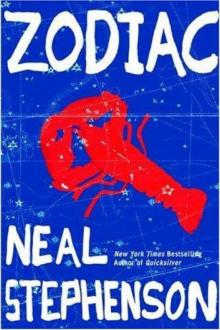 Zodiac: The Eco-Thriller
Zodiac: The Eco-Thriller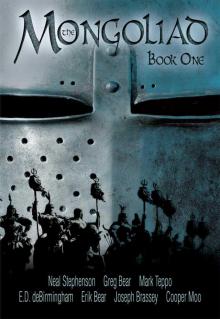 The Mongoliad: Book One
The Mongoliad: Book One Snow Crash
Snow Crash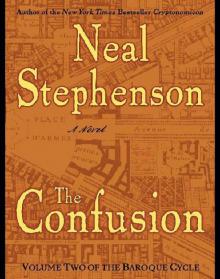 The Confusion: Volume Two of the Baroque Cycle
The Confusion: Volume Two of the Baroque Cycle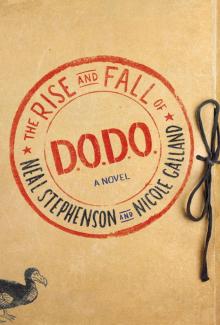 The Rise and Fall of D.O.D.O.
The Rise and Fall of D.O.D.O.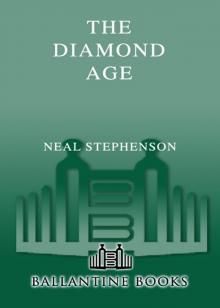 The Diamond Age: Or, a Young Lady's Illustrated Primer
The Diamond Age: Or, a Young Lady's Illustrated Primer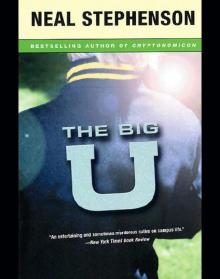 The Big U
The Big U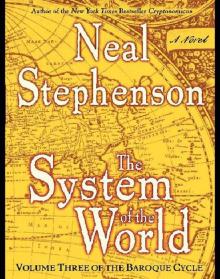 The System of the World: Volume Three of the Baroque Cycle
The System of the World: Volume Three of the Baroque Cycle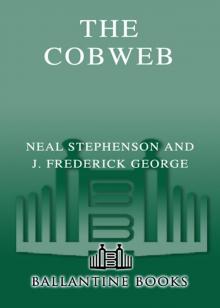 The Cobweb
The Cobweb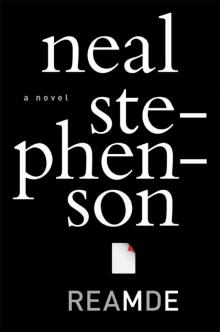 Reamde
Reamde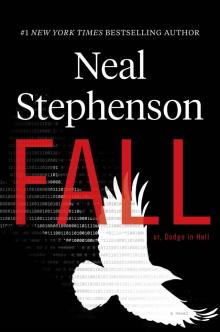 Fall; or, Dodge in Hell
Fall; or, Dodge in Hell Interface
Interface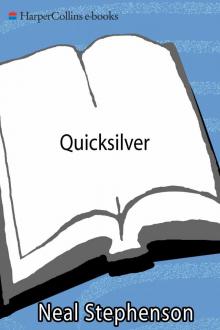 Quicksilver
Quicksilver The Mongoliad: Book Three
The Mongoliad: Book Three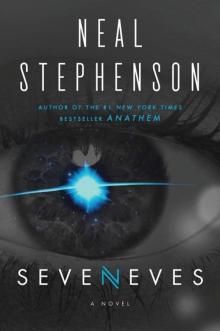 Seveneves
Seveneves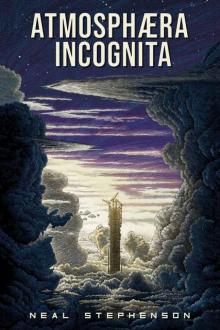 Atmosphæra Incognita
Atmosphæra Incognita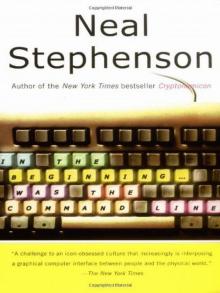 In the Beginning...Was the Command Line
In the Beginning...Was the Command Line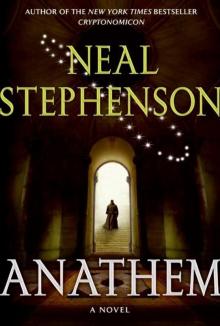 Anathem
Anathem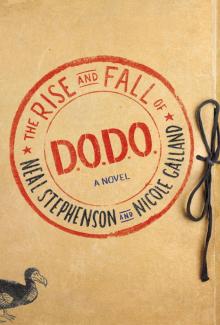 The Rise and Fall of D.O.D.O.: A Novel
The Rise and Fall of D.O.D.O.: A Novel The Mongoliad: Book Two
The Mongoliad: Book Two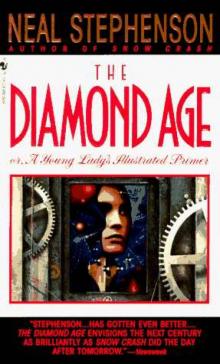 Diamond Age or a Young Lady's Illustrated Primer
Diamond Age or a Young Lady's Illustrated Primer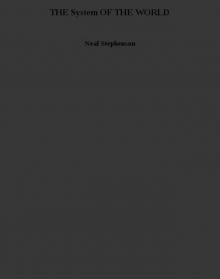 THE System OF THE WORLD
THE System OF THE WORLD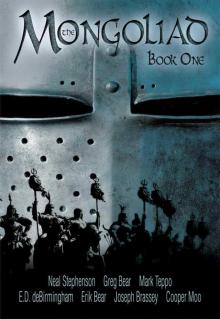 The Mongoliad: Book One tfs-1
The Mongoliad: Book One tfs-1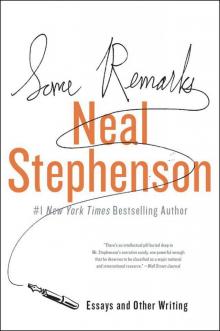 Some Remarks: Essays and Other Writing
Some Remarks: Essays and Other Writing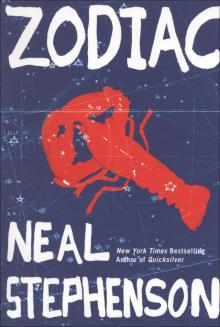 Zodiac
Zodiac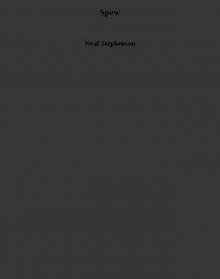 Spew
Spew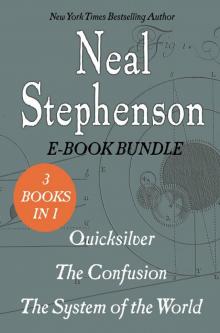 The Baroque Cycle: Quicksilver, the Confusion, and the System of the World
The Baroque Cycle: Quicksilver, the Confusion, and the System of the World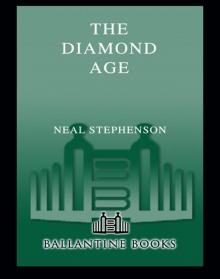 The Diamond Age
The Diamond Age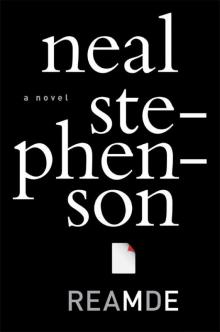 Reamde: A Novel
Reamde: A Novel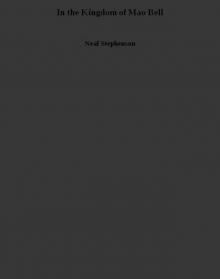 In the Kingdom of Mao Bell
In the Kingdom of Mao Bell Mother Earth Mother Board
Mother Earth Mother Board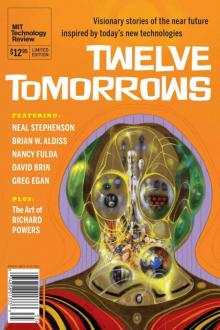 Twelve Tomorrows - Visionary stories of the near future inspired by today's technologies
Twelve Tomorrows - Visionary stories of the near future inspired by today's technologies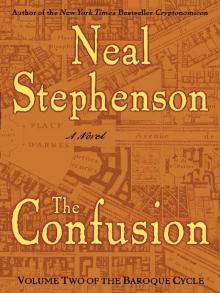 The Confusion
The Confusion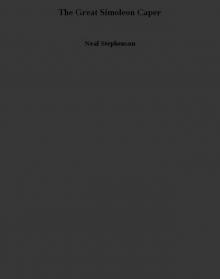 The Great Simoleon Caper
The Great Simoleon Caper The Mongoliad: Book Three tfs-3
The Mongoliad: Book Three tfs-3